6 Best Prime Lenses for Canon Cameras in 2020
When talking about the best lenses for Canon cameras, we think mostly about zoom lenses as you can use a single one for multiple purposes. However, there are lots of reasons to choose a prime instead. Prime lenses require fewer elements and are generally lighter and more compact. They are sharper and brighter since only one focal length needs to be taken into account. Lastly, their overall optical properties are better.
Here are the six best prime lenses for Canon cameras you can get today. Some feature state-of-the-art breakthroughs in optical excellence while others have stood the test of time despite growing competition. We’ve included models of different focal lengths, so you’re sure to find a winner no matter what kind of photography you pursue.
| Budget |
|---|
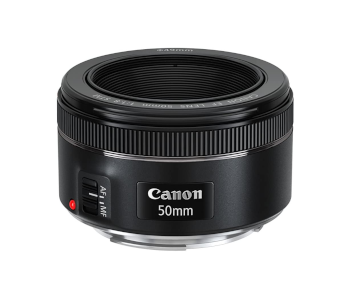 |
| Canon EF 50mm f/1.8 STM |
| 4.3/5.0 |
| Type: Standard prime |
| Focal length: 50mm |
| No CA issues and has a nice bokeh. |
| Check Amazon |
| Best Value |
|---|
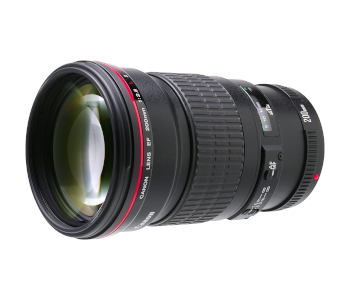 |
| Canon EF 200mm f/2.8L II USM |
| 4.7/5.0 |
| Type: Wide-angle prime |
| Focal length: 200mm |
| Handles distortion and vignetting well. |
| Check Amazon |
| Top Pick |
|---|
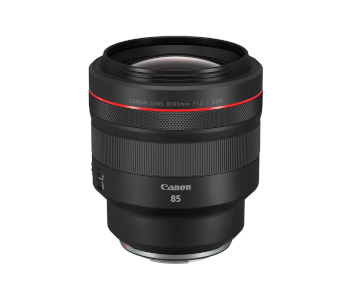 |
| Canon RF 85mm F1.2L USM |
| 5.0/5.0 |
| Type: Portrait prime |
| Focal length: 85mm |
| Immaculate optics and excellent build quality. |
| Check Amazon |
Prime Lenses for Canon Cameras Comparison Table
| Image | Product | Overall Rating | Image quality | Build quality | Versatility | Price |
|---|---|---|---|---|---|---|
 | Canon RF 85mm F1.2L USM | 5.0 | 5.0 | 4.9 | 5.0 | Check Price |
 | Canon EF 200mm f/2.8L II USM | 4.7 | 4.7 | 4.6 | 4.7 | Check Price |
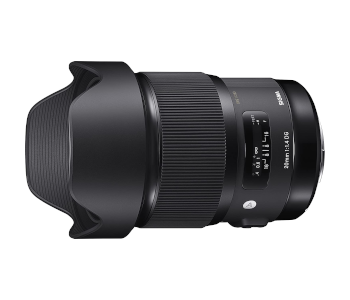 | Sigma 20mm F1.4 Art DG HSM | 4.7 | 4.8 | 4.6 | 4.6 | Check Price |
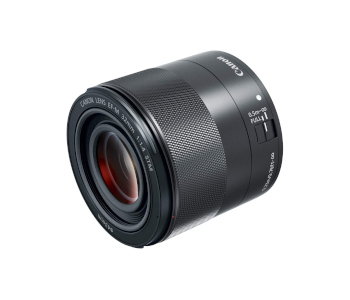 | Canon EF-M 32mm f/1.4 STM | 4.5 | 4.5 | 4.4 | 4.6 | Check Price |
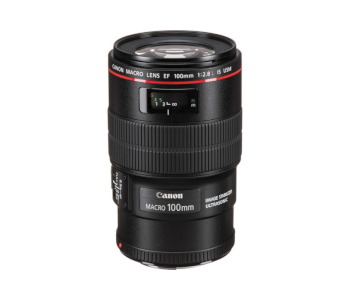 | Canon EF 100mm f/2.8L IS USM Macro | 4.6 | 4.7 | 4.7 | 4.4 | Check Price |
 | Canon EF 50mm f/1.8 STM | 4.3 | 4.4 | 4.0 | 4.5 | Check Price |
1. Best Overall – Canon RF 85mm F1.2L USM
Editor’s Rating: 5/5
The EOS R line of mirrorless cameras needed a high-end portrait prime since its inception, and the RF 85mm F1.2L USM exceeds even the highest expectations. Canon claims it’s the best 85mm prime it’s ever made, and we’re inclined to agree. It features impeccable optics, world-class sharpness, fast autofocus, and amazing build quality.
Overview of Features
There’s no getting around it, the RF 85mm F1.2L USM is huge, so much so that even photographers with large hands won’t be able to grasp the broader part of its barrel fully. It dwarfs supported cameras but makes up for the bulk by being simple to use and having superb weather sealing. The lens is treated with the standard set of high-grade coatings along with a new type called Air Sphere Coating designed to neutralize flaring from parallel light sources.
Autofocus is handled by a ring-type Ultra-Sonic Motor that does an admirable job. The lens snaps to attention nearly instantly and is barely hampered by low light. You might want to switch AF off for movies or during quiet moments at church since it will be audible. The manual focus ring handles beautifully and can be set to respond either to the speed of rotation or its throw. There’s also a control ring that lets you adjust shutter speed, ISO, EV comp, or aperture.
The RF 85mm F1.2L USM is one of the sharpest lenses we’ve ever tested regardless of brand or camera type. It’s already uniformly sharp at f/1.2 as the difference between its edges and the center is academic. Take a moment to let that sink in. Resolution excellence continues throughout its aperture range, dwindling only at f/16 due to diffraction.
Other optical properties are equally impressive. The lens has 13 elements in seven groups, including one designed to filter out blue light and minimize LoCA. You’ll see 1.5 stops of light falloff in the extreme corners at f/1.2 that disappears by f/1.8. There’s no distortion, and bokeh is wonderfully creamy.
What We Didn’t Like
The RF 85mm F1.2L USM is an expensive lens. All of its features make the price easier to swallow, though. Its weight and size are a more pressing concern. It isn’t a comfortable lens and will take its toll on photographers keen on outdoor shoots.
| Tech Specs |
|---|
| Dimensions: 4.1 x 4.1 x 4.6” |
| Weight: 2.6 lbs |
| Type: Portrait prime |
| Focal length: 85mm |
| Maximum aperture: f/1.2 |
| Minimum aperture: f/16 |
| Minimum focus distance: 2.7’ |
| Angle of view: 28° 30′ |
| Image stabilization: No |
| Pros |
|---|
| Extraordinary uniform sharpness |
| Immaculate optics |
| Excellent build quality |
| Quick autofocus |
| Cons |
|---|
| Large & heavy |
| Expensive |
2. Best Value – Canon EF 200mm f/2.8L II USM
Editor’s Rating: 4.7/5
Canon isn’t in the habit of making telephoto primes anymore, so the EF 200mm f/2.8L II USM is one of the oldest lenses we’ve ever reviewed. It’s also an outstanding modern-day performer ideal for sports, events, animals, and any other situations that require maintaining a distance from the subject. It’s fast, sharp, and balanced in terms of optics. Plus, you can get the lens for a fantastic price.
Overview of Features
The first thing you’ll notice about the EF 200mm f/2.8L II USM is how light and small it is for a telephoto lens. No zooming means no more than nine elements are needed. A combination of polycarbonate & metal brings the weight down further. The lens focuses internally, so polarizers and ND filters can be easily fitted to the front. You also get a barrel-shaped hood and storage pouch.
We were impressed with the EF 200mm f/2.8L II USM’s autofocus performance. It was designed with erratic subject tracking in mind and has no trouble keeping pace with fast-action sports. You’ll love using it for wildlife photography, too, since AF operation is silent. Just make sure the weather is fine first. The manual focus ring is broad and rubbery. Using it is a pleasure as focus adjustments are smooth & precise.
The EF 200mm f/2.8L II USM excels at central sharpness no matter the aperture. Edges and corners trail behind at f/2.8 but are definitely not soft. All values rise as you step down, peaking at f/5.6 and remaining great until f/11. You might get away with f/16, but anything lower than that comes with a hefty resolution penalty.
Bokeh at f/2.8 looks smooth and even. Cat’s eyes can occur towards the edges, though, so you might want to switch to f/4 if these are bothersome. There’s slight pincushion distortion that won’t show up in photos unless you’re shooting architecture. Light falloff is excellent for a telephoto lens, reaching a maximum of 0.9 stops wide open. Chromatic aberration isn’t an issue either.
What’s Bad About It?
The EF 200mm f/2.8L II USM doesn’t have image stabilization, which means you have no choice but to rely on a tripod. It’s also not weather-sealed. That’s an even bigger omission since it forces you to take the weather into account and makes shooting in damp conditions inadvisable.
| Tech Specs |
|---|
| Dimensions: 3.3 x 3.3 x 5.4” |
| Weight: 1.7 lbs |
| Type: Wide-angle prime |
| Focal length: 200mm |
| Maximum aperture: f/2.8 |
| Minimum aperture: f/32 |
| Minimum focus distance: 4.9’ |
| Angle of view: 12° |
| Image stabilization: No |
| Pros |
|---|
| Excellent value for the money |
| Accurate and quiet autofocus |
| Handles distortion and vignetting well |
| Sharp across the board |
| Cons |
|---|
| Lacks weather sealing |
| No image stabilization |
3. Sigma 20mm F1.4 Art DG HSM
Editor’s Rating: 4.7/5
Sigma is a 3rd-party manufacturer known for quality lenses at reasonable prices. The 20mm F1.4 Art DG HSM is a fantastic example of both. Moreover, it’s the first 20mm wide-angle prime to support a max aperture of f/1.4. That means more light can reach the sensor, letting you pull off amazing landscape & night sky shots or use it handheld. The lens is optically sound, made to last, and more versatile than its focal length would have you believe.
Overview of Features
The 20mm F1.4 Art DG HSM is heavy for a wide-angle prime due to the glass needed to achieve such a high aperture. 15 elements in 11 groups add up, and the TSC body with strategically-placed metal parts sacrifices weight for stability. The front-most element is bulbous and protected by a non-removable petal-shaped lens hood. An autofocus switch is the only physical control apart from the focus ring.
Sigma equips all of their Art lenses with Hyper-Sonic Motors that handle autofocus with quiet reliability. It’s reasonably quick too and barely affected by low light. The lens doesn’t extend while focusing, but its fixed hood prevents you from using ND filters. Its focus ring is the best physical feature as it protrudes slightly from the lens body and is easy to find. Holding the ring is comfortable, and its throw is ideal for precise adjustments.
Central sharpness starts out strong as the 20mm F1.4 Art DG HSM delivers excellent results even at f/1. 4. The corners are noticeably softer yet improve dramatically by f/2. It’s smooth sailing from there, and you’ll get peak performance with nearly uniform coverage from f/5.6 to f/8.
A wide aperture lets you make wonderfully blurry pictures with round and uniform bokeh in the background. It’s great for astrophotography as the lens can gather more light without introducing significant coma. On the opposite end, Sigma’s lens has excellent flair resistance and can pull off attractive sun stars with 18 points. There’s some barrel distortion typical for this lens type, but it isn’t a problem. Chromatic aberration can be seen at high apertures in the corners and doesn’t cut into overall image quality significantly.
Are There Drawbacks?
The 20mm F1.4 Art DG HSM suffers from strong vignetting at f/1.4. The corners are more than 3.5 stops darker than the center. That’s a lot, even if you like the effect. Fortunately, stepping down to f2 is already a significant improvement, while switching to f/2.8 takes care of it completely.
| Tech Specs |
|---|
| Dimensions: 3.6 x 3.6 x 5.1” |
| Weight: 2.1 lbs |
| Type: Telephoto prime |
| Focal length: 20mm |
| Maximum aperture: f/1.4 |
| Minimum aperture: f/16 |
| Minimum focus distance: 10.9” |
| Angle of view: 94.5° |
| Image stabilization: No |
| Pros |
|---|
| Bright aperture increases versatility |
| Excellent flare resistance |
| Tack-sharp across the frame at mid-range f-stops |
| Great build quality |
| Cons |
|---|
| Soft corners and strong vignetting at f/1.4 |
4. Canon EF-M 32mm f/1.4 STM
Editor’s Rating: 4.5/5
The Canon primes we’ve discussed so far are all meant for the company’s largest and most advanced cameras. The EF-M 32mm f/1.4 STM is a fantastic choice if you’re an EOS M shooter looking for a lens that matches your camera’s compact nature and versatility. It’s sharp, bright, works quietly, and excels at portrait photography while doubling as a macro lens in a pinch.
Overview of Features
The EF-M 32mm f/1.4 STM is a small and lightweight lens with a charcoal gray polycarbonate body dominated by a large focus ring. It fits snugly onto EOS M series camera s without upsetting their balance. A single focus limiter switch breaks up its otherwise symmetrical body, and a metal mount ensures prolonged use.
This is a small lens that requires a different approach to autofocus. That’s why it’s equipped with a gear instead of a stepping motor, which is smaller while affecting performance as little as possible. The EF-M 32mm f/1.4 STM is a fast and stealthy lens, acquiring subjects in tenths of a second while producing sounds easily drowned out by background noise. Its focus limiter switch speeds up focusing even more. We were especially impressed by the AF’s smooth performance for videos.
The EF-M 32mm f/1.4 STM’s sharpness is admirable from the get-go. Corners are softer than the center tat that setting, but not by much. Stepping down a single f-stop introduces little improvement since overall sharpness is already excellent. However, similar gains continue to add up, so expect marked improvements by the time you reach f/8.
We love the quality of the EF-M 32mm f/1.4 STM’s bokeh. It skews towards a cat’s eye shape at max aperture, especially towards the edges. On the other hand, bokeh balls are smooth and have a uniform inner color that doesn’t give way to onion rings even if you step sown to of/5.6.
The lens handles lateral chromatic aberration exceptionally well, and the little barrel distortion it shows can easily be circumvented if you avoid horizontal lines in your shots. Light falloff is present and goes away by f/4. Flares may appear if you shoot into the sun but aren’t problematic otherwise.
What We Didn’t Like
The EF-M 32mm f/1.4 STM has problems with longitudinal chromatic aberration much harder to correct than the lateral kind. Avoid high-contrast situations and backgrounds containing branches or other dark objects set against light backgrounds. The lens lacks optical image stabilization.
| Tech Specs |
|---|
| Dimensions: 2.4 x 2.4 x 2.2” |
| Weight: 8.3 oz |
| Type: Standard prime |
| Focal length: 32mm |
| Maximum aperture: f/1.4 |
| Minimum aperture: f/16 |
| Minimum focus distance: 9.1” |
| Angle of view: 46° 10′ |
| Image stabilization: No |
| Pros |
|---|
| Compact and portable |
| Dependable and silent autofocus |
| Consistent sharpness |
| No lateral CA |
| Cons |
|---|
| Pronounced LoCA at high apertures |
| Lacks image stabilization |
5. Canon EF 100mm f/2.8L IS USM Macro
Editor’s Rating: 4.6/5
Canon users interested in bugs, close-ups of computer hardware, or old coins need a macro lens, and none is better than the EF 100mm f/2.8L IS USM Macro. It’s part of the elite L series, meaning it brings superb build quality and performance at an equally exclusive price. Most importantly, the lens is optically stabilized and performs admirably when you need to use the manual focus.
Overview of Features
The EF 100mm f/2.8L IS USM Macro’s build quality is exceptional. On the one hand, you’ve got a quality plastic body that tightly brings together expensive glass & metal parts. On the other, the lens is weather-sealed and has a rubber gasket that doesn’t allow dust to damage your camera. Three switches line its side, while a see-through window on top shows the current distance and magnification ratio. A long barrel-shaped hood is included and lined with felt to minimize light reflection.
Autofocus is less important for macro lenses than others. Still, you’ll be glad that this one has a competent stepping motor if you ever want to use it as a portrait prime. Subjects’ movements are picked up instantly. You may improve performance further by constraining the lens to a macro range. The manual focus ring is responsive and precise while letting you make rapid adjustments if a subject moves.
The EF 100mm f/2.8L IS USM Macro has optical image stabilization. Canon’s claims of four stops of compensation in portrait mode are on point, as are the two stops that make snapping macro pics easier. Don’t ditch your tripod just yet, but the fact that you can shoot handheld if need be is comforting.
We have only positive things to say about the EF 100mm f/2.8L IS USM Macro’s sharpness. Superb central results are present throughout its aperture range, and the corners improve steadily as the aperture gets smaller.
There’s no distortion whatsoever, unsurprising for a macro lens. Both chromatic aberration variations are kept in check by the complex glass array, and two stops of vignetting present at f/2.8 go away at f/4. Most comparable lenses have decent bokeh quality at macro range yet struggle to maintain it for portraiture. This one doesn’t suffer from that problem.
What’s Bad About It?
The EF 100mm f/2.8L IS USM Macro performs poorly when direct sunlight is in the shot. It exhibits lots of colorful artifacts and has pronounced veiling flare. However, repositioning to exclude the sun reduces these issues dramatically. There are cheaper alternatives that can do almost everything this lens can. Consider the Canon EF 100mm f/2.8 Macro USM if you don’t care for image stabilization and weather sealing.
| Tech Specs |
|---|
| Dimensions: 3.1 x 3.1 x 4.8” |
| Weight: 1.4 lbs |
| Type: Macro lens |
| Focal length: 100mm |
| Maximum aperture: f/2.8 |
| Minimum aperture: f/32 |
| Minimum focus distance: 11.8” |
| Angle of view: 24° |
| Image stabilization: Yes |
| Pros |
|---|
| Remarkably sharp |
| Fantastic build quality and weather sealing |
| No distortion |
| Minimal CA |
| Cons |
|---|
| Expensive |
| Poor resistance to flare |
6. Best Budget Option – Canon EF 50mm f/1.8 STM
Editor’s Rating: 4.3/5
Have you had enough of your camera’s kit lens and want something more powerful yet dirt cheap? The EF 50mm f/1.8 STM is Canon’s least expensive lens, but its performance is far from poor. A focal length of 50mm is among the most versatile. It mimics a human perspective, while using an APS-C camera turns it into an 80mm portrait prime. There are better lenses out there, but you won’t get as much fun per dollar out of any of them.
Overview of Features
The EF 50mm f/1.8 STM is the smallest and lightest lens on review, as evidenced by its pancake shape. There’s no reason not to carry it inside a spare camera bag pocket and have it always at the ready. The plastic body is supplemented with a metal hood, which is outstanding considering the price. A focus switch is the only physical control, and you don’t get a lens hood. They’re cheap, so we suggest you get one if you plan on taking the lens outdoors.
Autofocus is handled by a stepping motor typical for canon’s low-end offerings. It’s not the quickest performer, so we wouldn’t recommend the EF 50mm f/1.8 STM for fast-paced action. On the other hand, there’s not much hunting, and the slowdown in low light is comparable to much more expensive models. The ring is ribbed, and its narrow profile doesn’t affect your ability to make small corrections.
The EF 50mm f/1.8 STM’s sharpness is fantastic, doubly so if you consider its price. The center starts out very good. The edges and corners aren’t soft, but they’re weaker. Stepping down leads to a linear progression where sharpness increases overall, yet the gap between center and edges never closes. The lens is at its best from f/5.6 to f/8, with f/11 still providing usable images.
CA mitigation is the EF 50mm f/1.8 STM’s most impressive optical feature. The lateral kind is nowhere to be seen, while you might occasionally find LoCA as slight green outlines that aren’t noticeable unless you zoom in. Barrel distortion is on par with the 32mm lens for EOS M cameras. Vignetting is noticeable but looks artistic more than anything.
Are There Drawbacks?
The EF 50mm f/1.8 STM is another lens with poor resistance to flares. Keep the sun out of the scene and you’ll be fine, though. The autofocus is slow and loud, so using it for making videos isn’t advisable.
| Tech Specs |
|---|
| Dimensions: 2.7 x 2.7 x 1.5” |
| Weight: 5.6 oz |
| Type: Standard prime |
| Focal length: 50mm |
| Maximum aperture: f/1.8 |
| Minimum aperture: f/22 |
| Minimum focus distance: 13.8” |
| Angle of view: 46° |
| Image stabilization: No |
| Pros |
|---|
| Impressive sharpness given its price |
| Takes up hardly any space |
| No CA issues |
| Nice bokeh |
| Cons |
|---|
| Autofocus is loud and slow |
| Prone to flaring in direct light |
Contents
- Prime Lenses for Canon Cameras Comparison Table
- 1. Best Overall – Canon RF 85mm F1.2L USM
- Overview of Features
- What We Didn’t Like
- 2. Best Value – Canon EF 200mm f/2.8L II USM
- Overview of Features
- What’s Bad About It?
- 3. Sigma 20mm F1.4 Art DG HSM
- Overview of Features
- Are There Drawbacks?
- 4. Canon EF-M 32mm f/1.4 STM
- Overview of Features
- What We Didn’t Like
- 5. Canon EF 100mm f/2.8L IS USM Macro
- Overview of Features
- What’s Bad About It?
- 6. Best Budget Option – Canon EF 50mm f/1.8 STM
- Overview of Features
- Are There Drawbacks?

